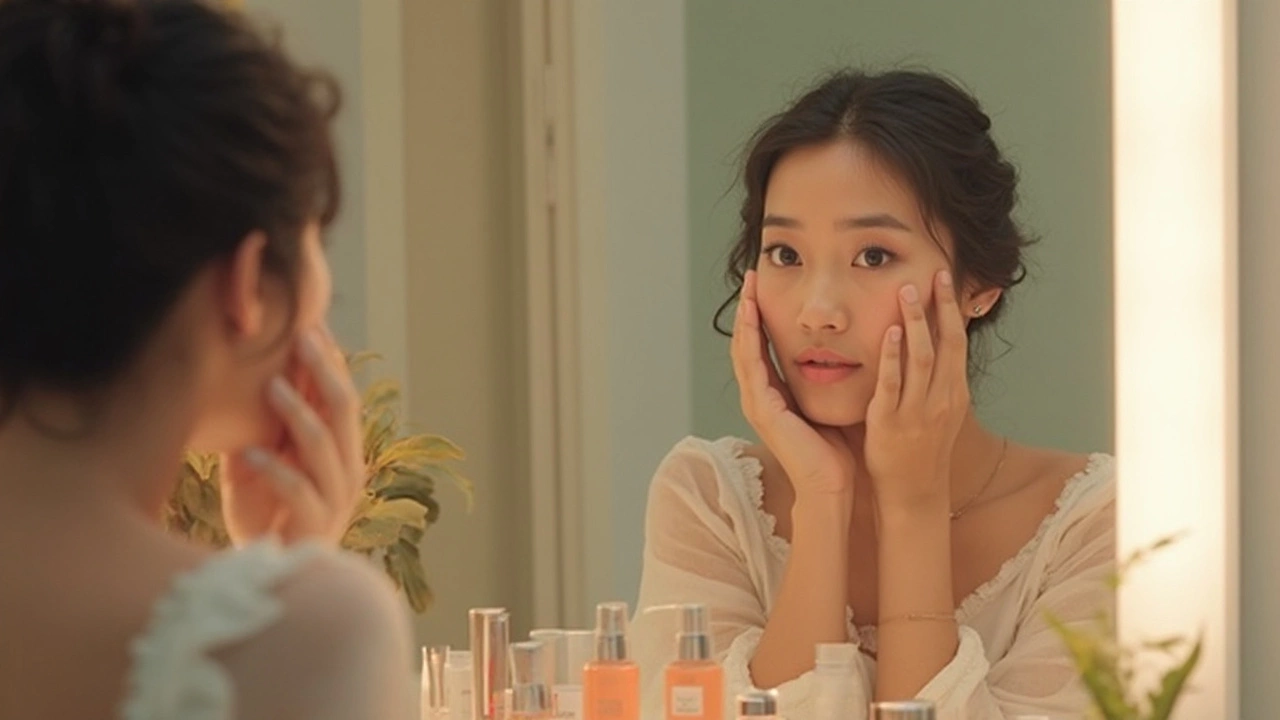K-beauty vs J-beauty: What Sets Them Apart
If you’ve ever walked down the beauty aisle, you’ve probably seen both Korean and Japanese brands fighting for your attention. Both promise glowing skin, but they don’t do it the same way. Understanding the core differences can save you time, money, and a lot of trial‑and‑error.
Ingredients and Formulas
K‑beauty loves innovation. Think fermented extracts, snail mucin, and centella asiatica. These ingredients are chosen for their ability to boost skin turnover and lock in moisture. The formulas tend to be lightweight, almost watery, so they layer nicely without feeling heavy.
J‑beauty, on the other hand, leans toward simplicity and tradition. Rice bran, camellia oil, and green tea dominate the ingredient list. Japanese products focus on pore‑refining and subtle brightening, often with a more ointment‑like texture that feels nourishing but not greasy.
Both sides avoid harsh irritants, but K‑beauty is more experimental, while J‑beauty sticks to time‑tested botanicals. If you have sensitive skin, you might gravitate toward the gentle, low‑pH Japanese formulas. If you crave visible texture changes, the active Korean ingredients could be a better fit.
Routine Style and Pricing
K‑beauty popularized the multi‑step routine – cleanse, tone, essences, serums, moisturizers, and sunscreen. Some enthusiasts add sheet masks and sleeping packs, pushing the count to 10 steps. The idea is to build layers that address specific concerns one by one.
Japanese skincare takes a more minimalist approach. The classic “double‑cleanse” is followed by a toner (often called a lotion), a serum or ampoule, and a moisturizer. The routine usually stays under five steps, emphasizing efficiency and consistency.
Price-wise, both markets have a wide range. You can find drugstore K‑beauty items that cost under $10 and luxury J‑beauty products that go over $100. The key is to match the price with the ingredient potency. A high‑price Japanese oil might be worth it for dry skin, while a cheap Korean sheet mask can still deliver a quick hydration boost.
When you decide which side to follow, ask yourself three questions: Do you prefer a detailed routine or a quick one? Are you after cutting‑edge actives or classic botanicals? And how much time are you willing to spend each morning and night?
Ultimately, you don’t have to choose one camp forever. Many fans mix and match – a Korean essence for a moisture boost, followed by a Japanese rice‑based cream for lasting softness. Experiment, track how your skin reacts, and build a routine that feels natural to you.
So next time you shop, look beyond the packaging. Spot the ingredients, note the texture, and think about how many steps you’re comfortable with. That’s how you turn the hype into a routine that really works for your skin.
Korean vs. Japanese Skin Care: Which Routine Works Best?
Korean and Japanese skincare both promise glowing skin, but their approaches look different. This article breaks down what sets each routine apart, what skincare lovers can expect, and the science behind their hero steps. You'll find tips for getting the most out of both styles without all the hype. Whether you're a total beginner or consider yourself a skincare nerd, this helps you decide which path fits your lifestyle—and your face—best.

 Hair Care
Hair Care